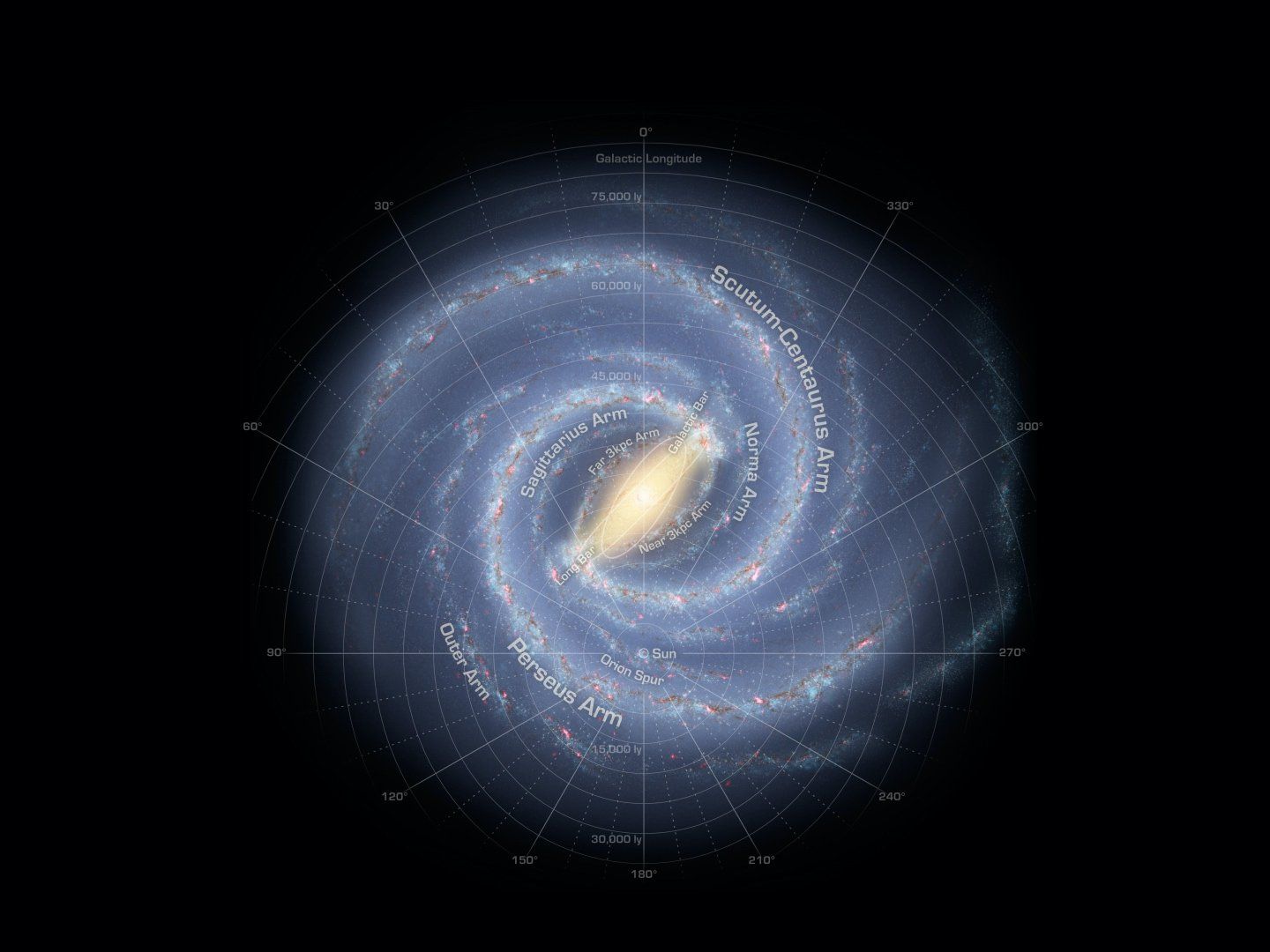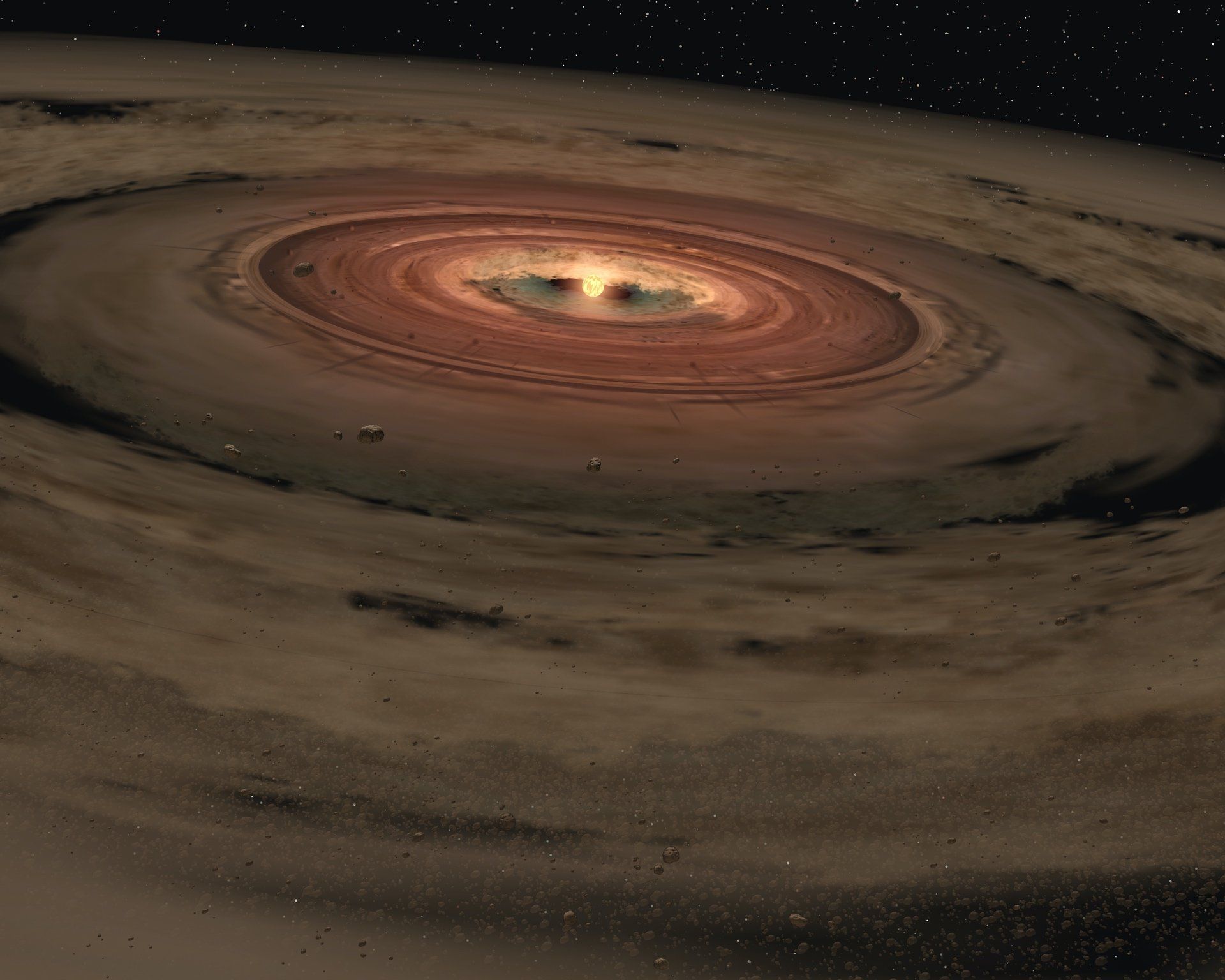This web page is created within BALTICS project funded from the European Union’s Horizon2020 Research and Innovation Programme under grant agreement No.692257.
Solar system – formation, structure, location in the galaxy
About 4.6 billion years ago, a massive star exploded in a huge cloud of gas and dust in a Milky Way galaxy. Various chemical elements had formed in its nucleus, which spread rapidly and mixed with the surrounding hydrogen clouds. The shock wave of the explosion crushed an area of this huge cloud, forming particularly dense clusters of gases.
The compressed and thus denser areas, due to their gravitational force, began to pull the surrounding gas and dust in their direction, growing their mass. The more matter could be captured in the gravitational zone, the more these dust clusters were compressed and became smaller, which revolved faster and faster around their axis. After a while, the rotation was so fast that the gas in the center formed a sphere, and the rest of the material was a disk of dust and gas, which continued to pull everything it could.
This is how the star embryo started. The small, rotating spheres continued to attract gas and dust from the disk, growing mass and becoming more massive. The force of gravity, which acted most strongly in the center of the emerging stars, pulled the particles closer and closer. In the central areas of the formation, the density increased and, as the substance compressed, its temperature also increased.
At the same time, denser areas of gas and dust began to form on the disk, at different distances from the star’s embryo. Soon the disk, slowly rotating around its axis, circled pebbles of various sizes, and after a while they were already loaded blocks, which were pulled together and merged, eventually forming round spheres of hard rock. There were objects of various sizes on the disk at the same time. Some of them were already so massive that they were able to attract and retain much lighter gas molecules.
At one point, the stars – what we will call the Sun many billions of years later – reached the temperature and pressure needed to start nucleosynthesis reactions when helium is formed by the combination of hydrogen atoms. From this point on, a star can be considered born. One by one, the other new lights lit up, and at birth, strong star winds began to blow, slowly driving away the gas and dust on the disks. This is how the Sun and its sisters, stars, have a very similar chemical composition.
The resources near the sun became less and less, the smaller objects there stopped growing their mass. They became hard planets. The next ones took longer to gather more material, creating a giant planet.
It is likely that in the early days of the solar system, there were far more planetary embryos. Their orbits were unstable and they often collided with each other. Some of the planets were destroyed. It is now known that the solar system includes the Sun, eight planets, four of which are Earth-type planets with a solid surface, and four are giant or gas planets, as well as a huge number of smaller objects – asteroids, dwarf planets and comets. Some of the planets have natural satellites.
The sun and its sisters formed an open cluster of stars, where the stars were scattered. Gravity could not hold them together. The sun and the other stars in this cluster gradually moved away from each other, wandering somewhere in the vast expanses of the Milky Way galaxy.
The solar system is currently about 25,000 light-years from the center of the galaxy in the so-called Orion arm. The sun, along with planets, orbits around the center of the galaxy. One roundabout lasts about 220 million Earth years.




















